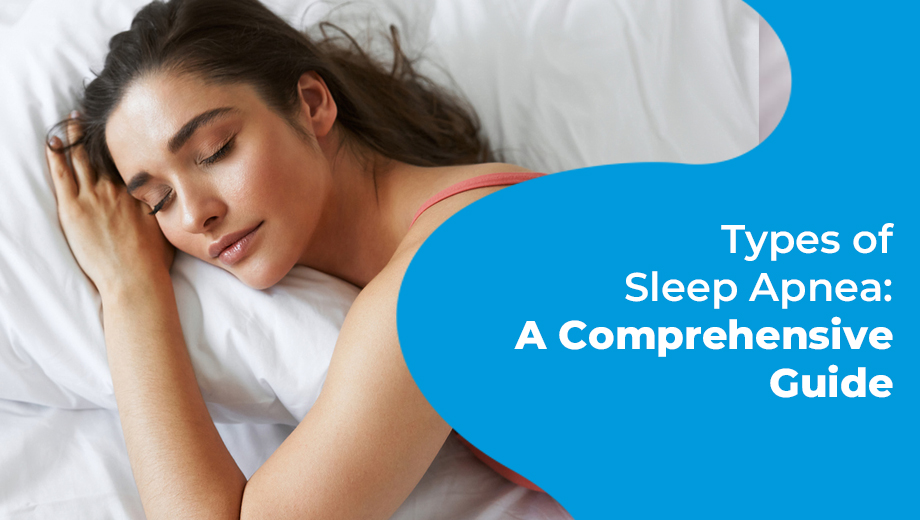Sleep apnea is a common but critical sleep disorder in which breathing stops and begins often during sleep. This illness frequently goes untreated and has a substantial influence on overall health. The three primary kinds are obstructive sleep apnea (OSA), central sleep apnea (CSA), and complex sleep apnea syndrome. The most prevalent type of sleep apnea is due to relaxed throat muscles that block the airway. Symptoms include loud snoring, periods of no breathing, and extreme daytime sleepiness. Untreated sleep apnea can cause cardiovascular problems, diabetes, and decreased cognitive function. A sleep study is often used to diagnose the condition, and treatment options range from lifestyle adjustments to continuous positive airway pressure (CPAP) therapy.
Types of Sleep Apnea
There are three types of sleep apnea. Following are the details of the types of sleep apnea.
1. Obstructive Sleep Apnea (OSA)
Persistent episodes of partial or whole upper airway blockage during sleep are the hallmark of obstructive sleep apnea (OSA), a common sleep disease. Sleep disturbances result from this, which can have a serious negative effect on general health and well-being.
Symptoms
- Snoring loudly is often the most obvious sign, and bed partners are usually the ones who notice it.
- Stopped breathing episodes have been seen in people while they sleep. Usually, gasping or choking follows them.
- Feeling sleepy and tired during the day, regardless of whether you get a sufficient amount of sleep,
- Headaches that happen a lot when you wake up
Treatment
- For CPAP (continuous positive airway pressure) treatment, a mask is worn that provides constant air pressure and keeps the airway open while you sleep. It works best for treating moderate-to-serious OSA.
- For mild-to-moderate OSA, dental devices that move the lower jaw and tongue to keep the airway open are a good option.
2. Central Sleep Apnea (CSA)
The sleep disease known as central sleep apnea (CSA) is characterized by recurrent bouts of breathing cessation during sleep as a result of low respiratory effort. Contrary to obstructive sleep apnea (OSA), which results from an actual obstruction of the airway, central sleep apnea (CSA) is linked to instability in the respiratory control regions of the brain.
Symptoms
- Problems Staying Asleep: Insomnia or having trouble staying asleep at night.
- Headaches in the morning are common when you wake up. This could be because your air levels changed while you slept.
- Memory and concentration problems: cognitive decline, such as problems with memory and focus.
- Shortness of breath: having trouble breathing when you wake up or while you sleep.
Treatment
ASV stands for adaptive servo-ventilation.
ASV is a non-invasive ventilation treatment that changes the pressure delivery based on how the person is breathing. This helps them sleep with steady breathing. Heart failure-related CSA responds very well to it.
BiPAP stands for “bi-level positive airway pressure.”
BiPAP gives people with CSA different levels of pressure when they breathe in and out. This can make it more comfortable and effective for them, especially if they also have another condition like COPD.
Conclusion
In conclusion, improving sleep apnea treatment and quality of life require early diagnosis and individualized care. Speak with a healthcare professional to create a successful management strategy.

